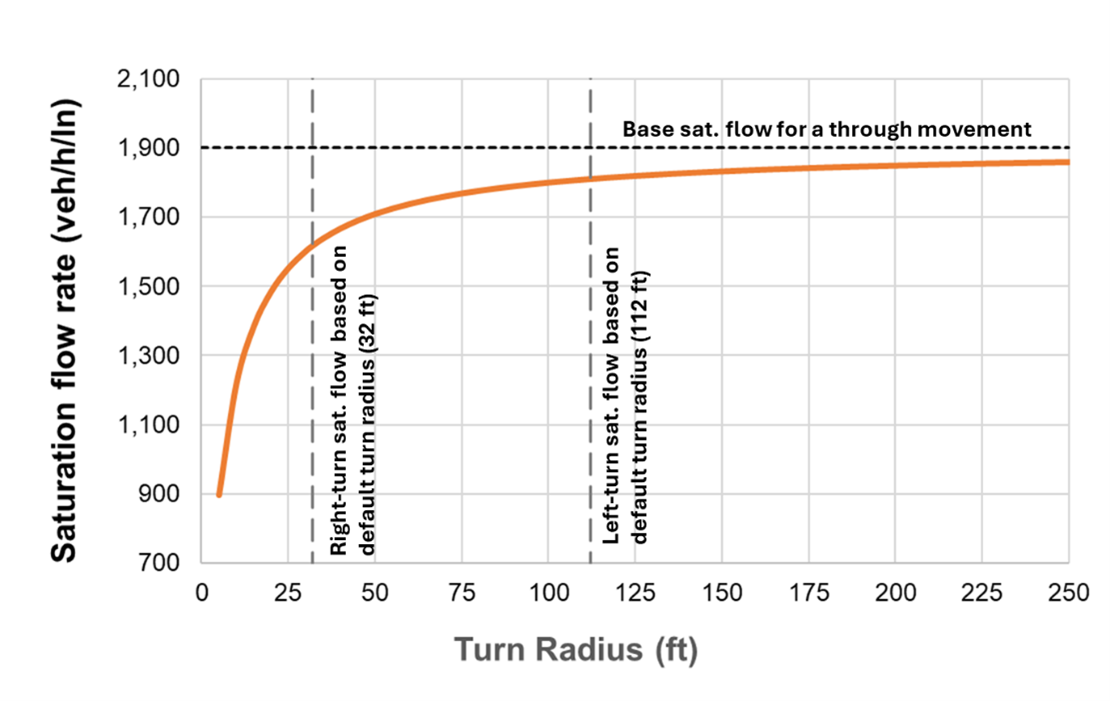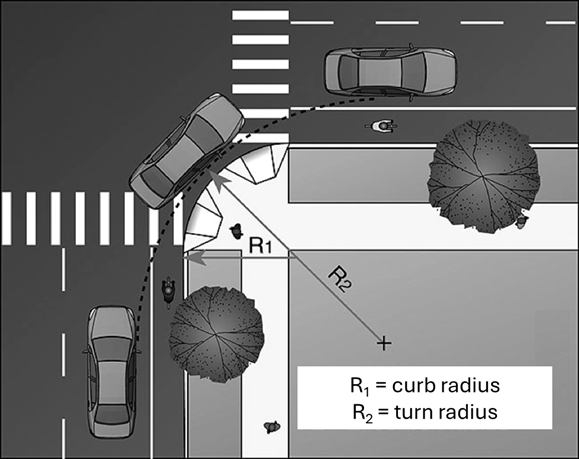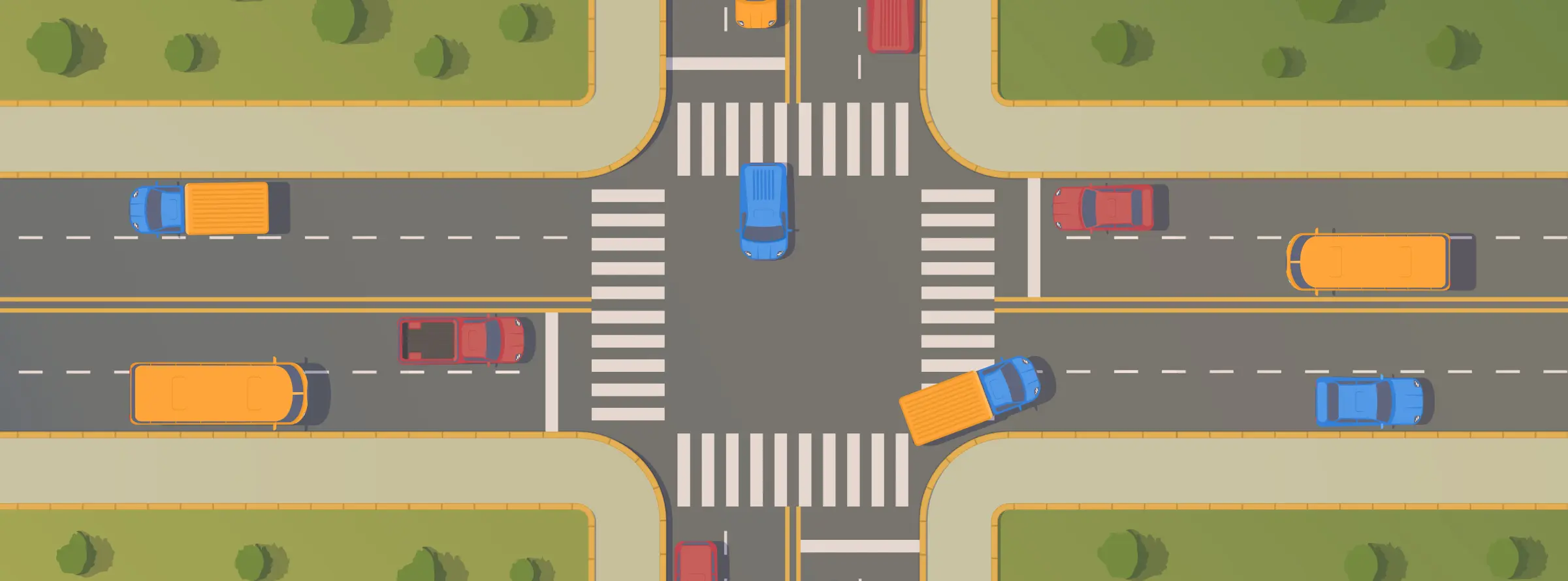Designing curb radii and turning radii at intersections is a critical element in balancing safety, accessibility, and traffic flow. A smaller radius reduces pedestrian crossing distance, slows turning vehicles, and increases pedestrian safety. However, a larger radius may be necessary on intersections that handle high volumes of large vehicles, such as buses and trucks, to allow them to turn safely without encroaching on adjacent lanes.
An adequate choice of radius should consider the surrounding land use, vehicle types, traffic volume, and pedestrian needs, ensuring it promotes a safe, efficient, and accessible intersection for all users.
This article will discuss the effects of turn radius on the operation of signalized intersections according to the HCM 7th Edition methods.
Modeling turn radii – HCM approach
HCM Chapter 19 – Signalized Intersections provides a series of adjustment factors to compute the saturation flow rate for turning movements in an intersection. The equivalent number of thru cars for a protected turn movement E is calculated with the following equation:
E = 1 + (5.61/R)
where R is the radius of curvature of the left- or right-turning path (at the center of the path), in feet.
Then, adjustment factors fLT and fRT are computed for the left-turn and right-turn movements, respectively. These factors multiply the base saturation flow rate (typically 1,900 pc/h/ln) to compute saturation flow rates for each movement:
sLT = s0/ fLT
sRT = s0/ fRT
where s0 is the base saturation flow rate (typically 1,900 pc/h/ln), and sLT and sRT are the computed saturation flow rates for left-turns and right-turns, respectively.
The figure below illustrates the effects of different turning radii on the base saturation flow rate of a turning movement. The default turn radius of 112 ft for left-turn movements yields a corresponding base saturation flow rate of 1,810 veh/h/ln. For right-turn movements, the default turn radius of 32 ft yields a corresponding base saturation flow rate of 1,610 veh/h/ln.

Effects of different turn radii on saturation flow rates
Modeling turn radii – HCS
When modeling an intersection in HCS, open the “Detailed Input Data” page at the bottom. Then, update the turn radii values found under “Intersection”:

Entering turn radii in HCS
When entering this input in an analysis, it is essential to understand the concept of “turn radius”, as it must be measured at the travel path of turning vehicles, and not at the curbside. The figure below illustrates the difference between these two concepts, where turn radius (R2) should be the measure used in the HCM context.

Curb radius vs turn radius (adapted from ITE)

